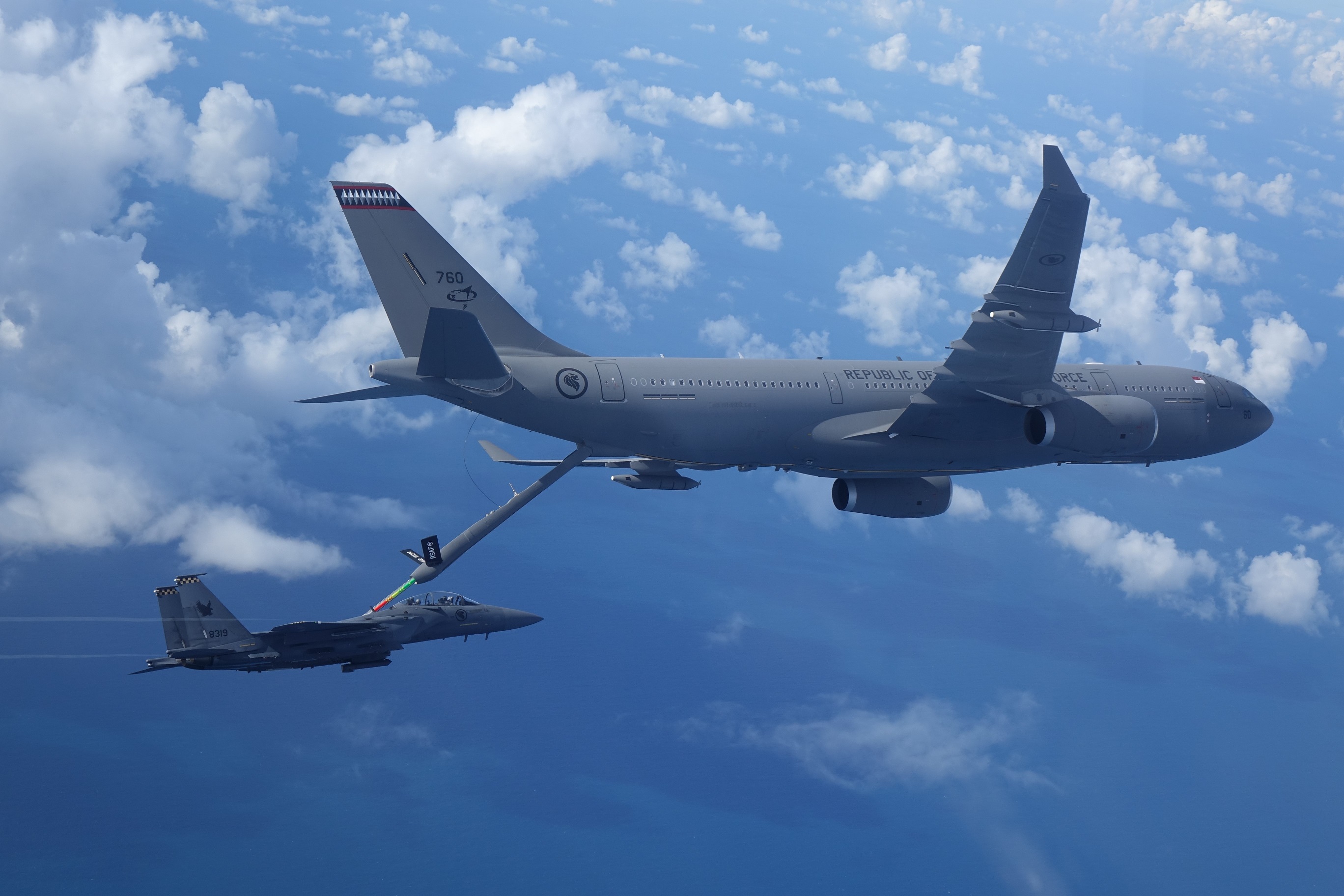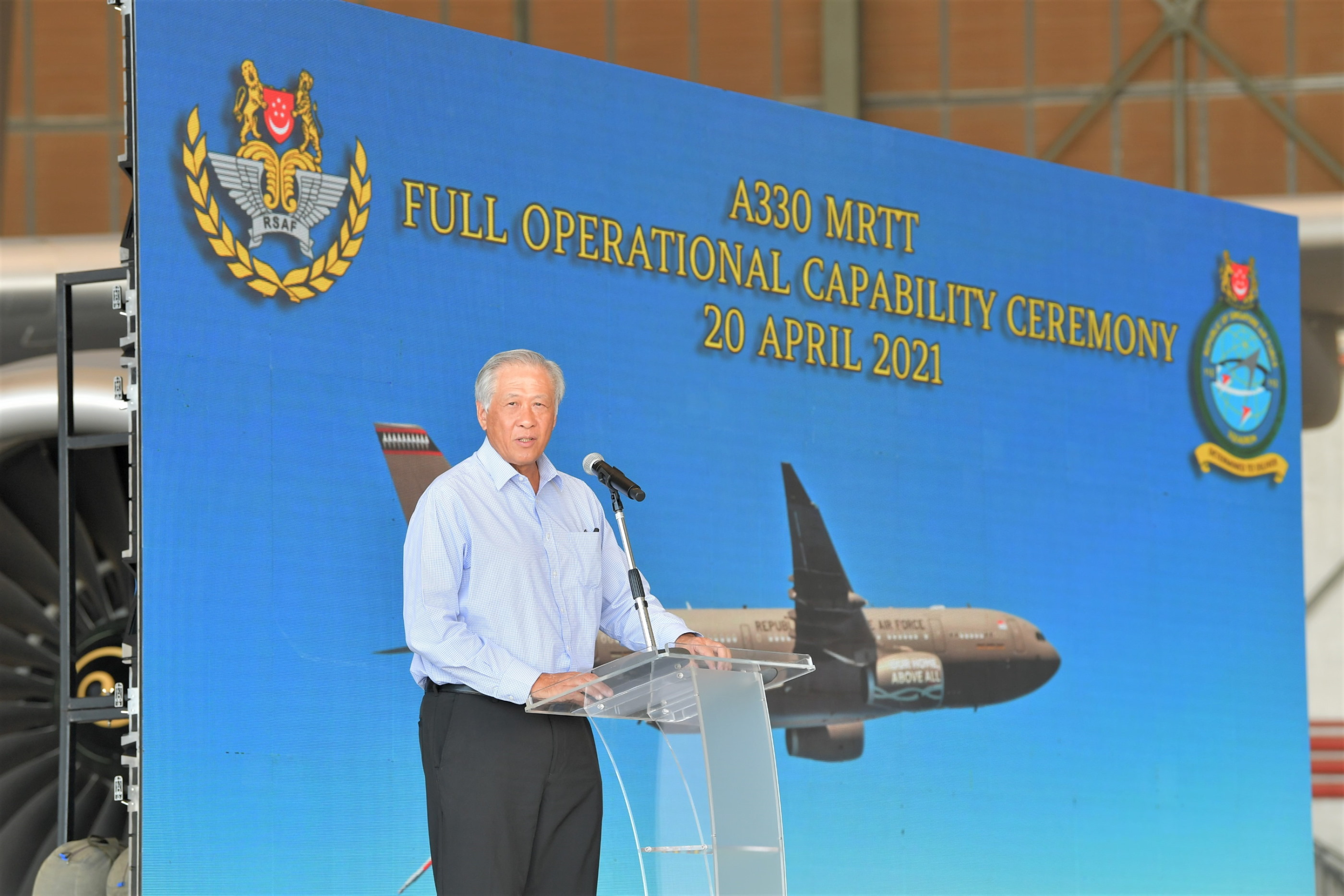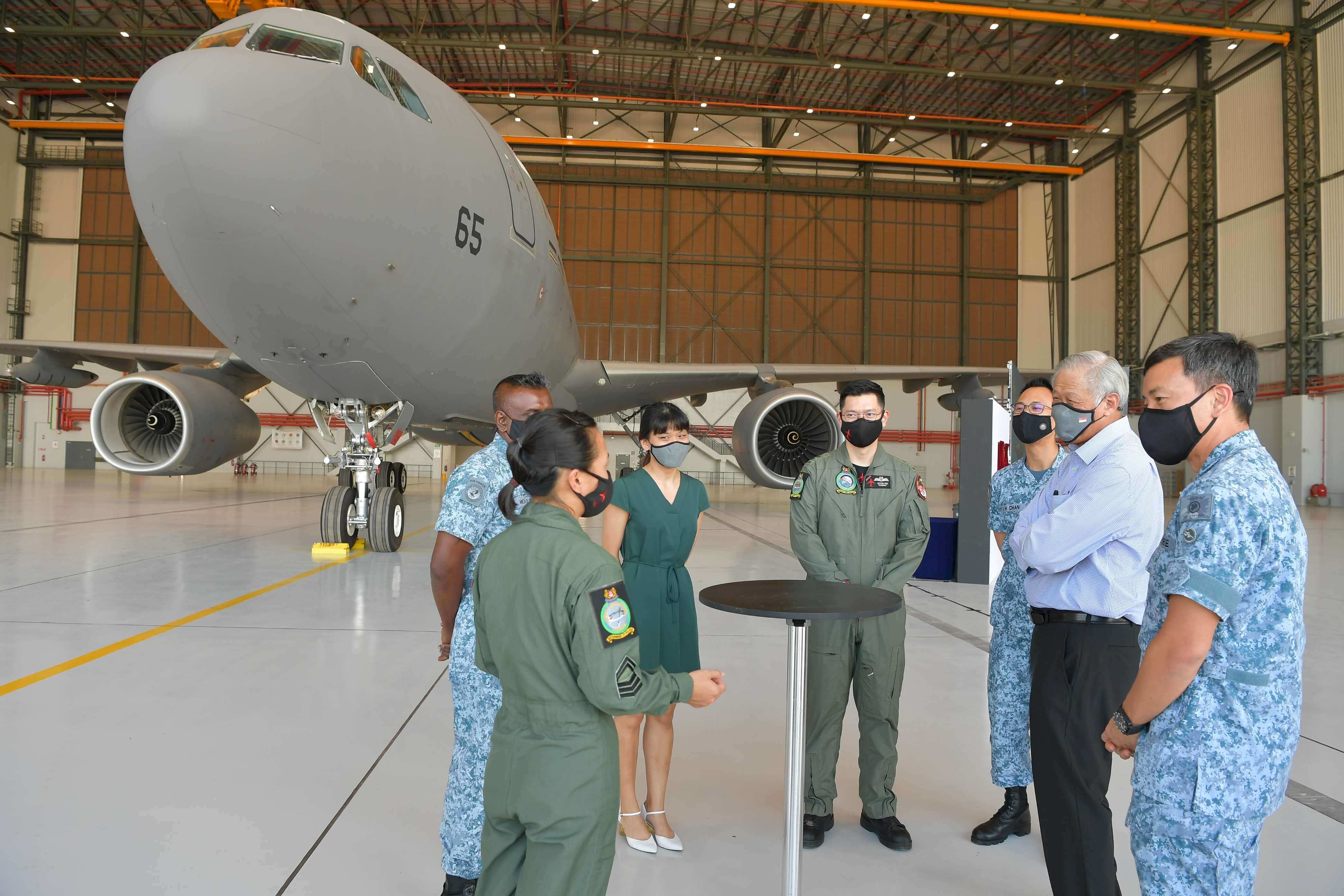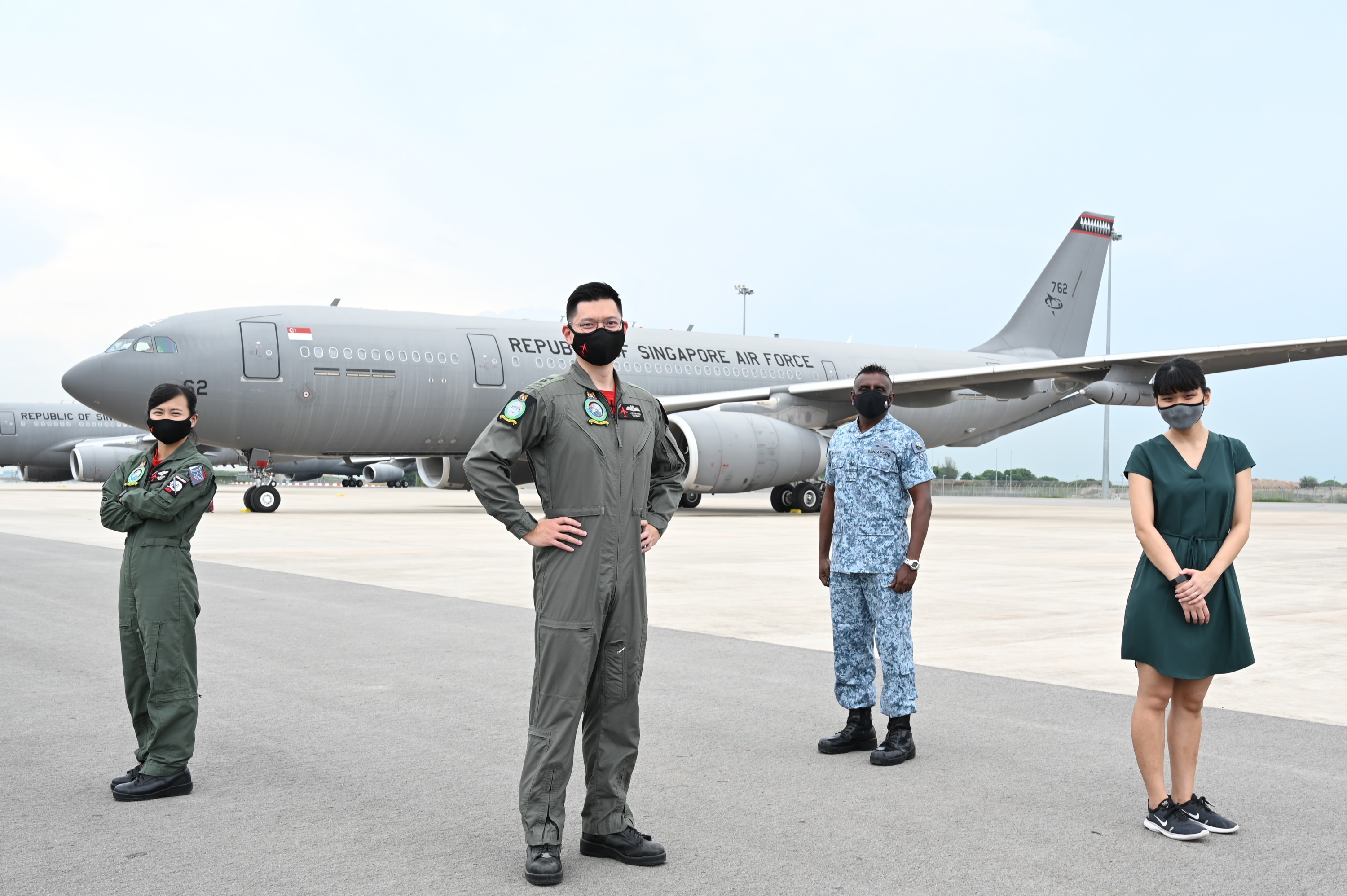20 Apr 2021
The strong collaboration between DSTA and the RSAF has enabled the A330 Multi-Role Tanker Transport (MRTT) to attain Full Operational Capability (FOC), giving Singapore a strategic airlift capability and extending the endurance of its fighter jets.
The A330 MRTT is a next-generation tanker aircraft capable of conducting air-to-air refuelling (AAR) and airlift roles simultaneously. Compared to its predecessor the KC-135R stratotanker, it has better endurance, cargo and passenger capacity, and provides more fuel to other aircraft.

Speaking at a ceremony on 20 April 2021 to mark the milestone, Minister for Defence Dr Ng Eng Hen said that the MRTT is another step up in the RSAF's capabilities. Dr Ng also highlighted how the strong ops-tech collaboration between the RSAF and DSTA has been pivotal in delivering capabilities, without which the MRTT programme “would not have come into fruition”.
He said: “[DSTA's] expertise and persistence enabled operational and technical problems to be addressed. DSTA engineers worked with the original equipment manufacturer to resolve the problem and their proposed modifications are now being assessed and promulgated across the global fleet of MRTTs. This is quite an achievement and is the fruit of consistent and effective tech integration by our engineers working alongside our servicemen.”


As the A330 MRTT's overall programme manager, DSTA played an instrumental role in overseeing the modification of the commercial A330-200 aircraft to meet the RSAF’s operational requirements. The team also managed the MRTT's acquisition to operationalisation.
The RSAF's MRTT is the first in the world to be operated with a three-man flight crew instead of four, which allows for manpower optimisation and provides the flexibility to scale up operations when needed. DSTA worked closely with the RSAF to streamline operational processes, and undertook a cognitive workload study that helped identify specific tasks that could be reassigned to just three crew members. The successful reduction of flight crew size has paved the way for A330 MRTT operators around the world to adopt it as a standard operating feature.

DSTA also spearheaded the technical effort to ensure that the MRTT was qualified to refuel the RSAF's fighter variants. For the F-16s, the team analysed existing flight test results between MRTTs and F-16s, and performed a technical study to compare the results to the MRTT and F-16's pairing. Through the study, they determined that the pairing could be qualified via analysis, saving time and resources on further flight trials, and allowing the RSAF to perform AAR operations between the MRTT and F-16s without delay.
The team also knew that the aerial refuelling boom would behave differently when approaching an F-15SG as compared to an F-16, due to the off-centre location of the F-15SG's refuelling receptacle. Therefore, even before the MRTT's delivery in 2018, the team was already collaborating with Airbus – the A330's manufacturer – to modify and enhance the boom flight control law software for the MRTT to perform AAR with the F-15SG aircraft.
Beyond the MRTT's baseline capability to perform AAR operations with the RSAF's variants, the team is also working with the RSAF and Airbus to introduce automatic AAR capabilities to the MRTT. Principal Engineer (Air Systems) Ang Wei Qin shared that the team is always looking for ways to improve the RSAF's MRTT operations, especially in terms of safety and efficiency. She added: “The MRTT's FOC is very meaningful to me as it is the first aircraft acquisition programme I was heavily involved in and helped to deliver. The success of the programme would not have been possible without the strong teamwork within the team and also with the RSAF.”
All images credited to MINDEF.
